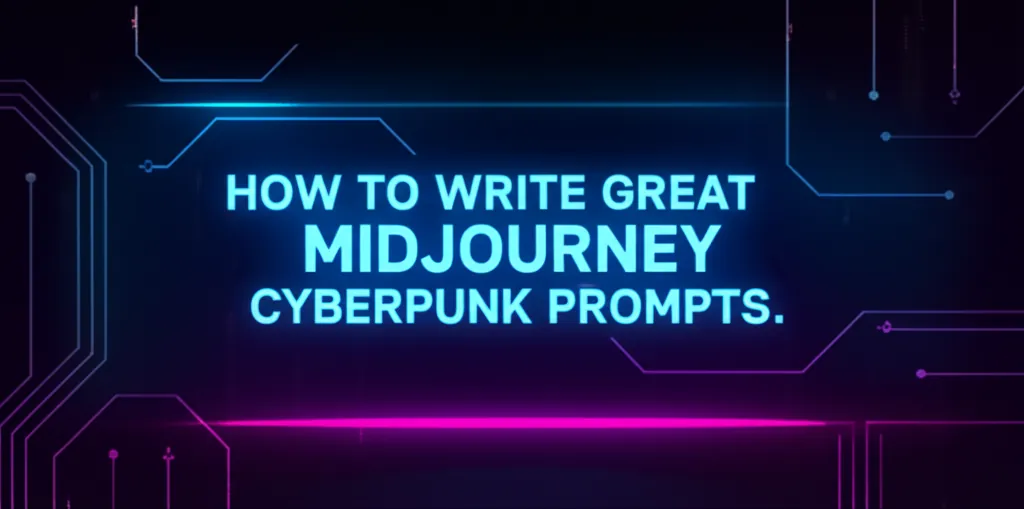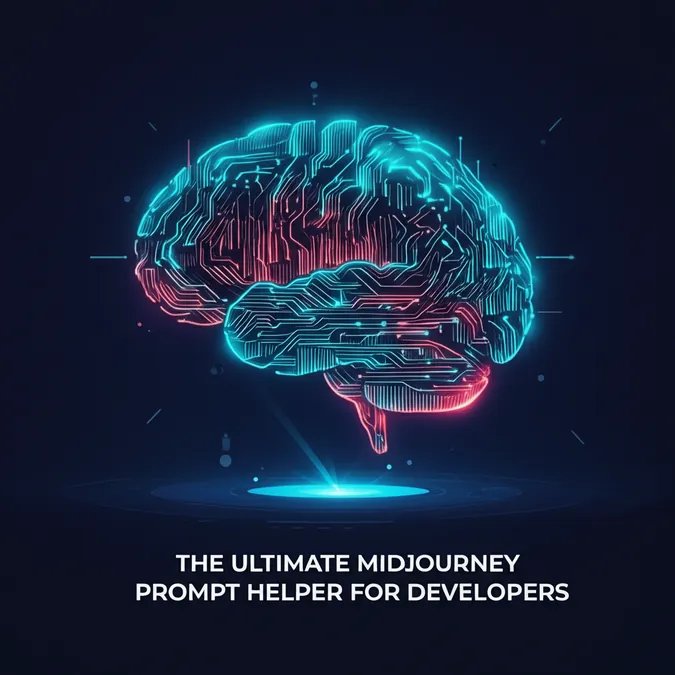Developer Offer
Try ImaginePro API with 50 Free Credits
Build and ship AI-powered visuals with Midjourney, Flux, and more — free credits refresh every month.
Midjourney Prompt Guide: Master Prompt Engineering
Midjourney Prompt Guide: Master Prompt Engineering
This comprehensive guide will transform you from a casual user into a master of Midjourney, teaching you the art and science of prompt engineering to create stunning, consistent, and sophisticated AI-generated images.
What is a Midjourney Prompt Helper? (And Which Type Do You Need?)
As Midjourney's capabilities have grown, a rich ecosystem of tools has emerged to help users craft better prompts. However, the terminology can be confusing. A "Midjourney prompt helper" isn't a single type of tool; it's a category that includes generators, builders, and guides. Understanding the difference is key to finding the right solution for your needs.
| Tool Type | Description | Best For |
|---|---|---|
| Prompt Generator | An automated tool that creates a full prompt for you based on a few simple inputs or selections. | Beginners or users looking for quick inspiration without much manual effort. |
| Prompt Builder | An interactive interface that provides menus and fields for different prompt components (style, lighting, camera, etc.), helping you construct a detailed prompt piece by piece. | Intermediate users who want more control and want to learn how different elements work together. |
| Prompt Guide | An educational resource (like this article) that teaches the principles of midjourney prompt engineering, providing the knowledge and techniques to write effective prompts from scratch. | Developers, designers, and anyone who wants to achieve mastery and full creative control over their results. |
While generators are great for speed and builders offer structure, this guide focuses on the most powerful tool of all: your own knowledge. By mastering the fundamentals, you can create anything you can imagine, without relying on external tools.
The Anatomy of a Perfect Midjourney Prompt
A great Midjourney prompt is more than just a simple description; it's a structured set of instructions. Think of it like a programming function where you pass specific arguments to get a predictable output. At its core, a well-engineered prompt contains several key components.
Here is a simple but powerful template you can copy and adapt for your projects:
[Subject/Content], [5 descriptive keywords], in the style of [artist/art style], [composition/shot type], [lighting style], --ar [aspect ratio] --v 6.0
Let's break down each element:
- Subject/Content: This is the "what" of your image. Be specific. Instead of "a dog," try "a fluffy Samoyed puppy."
- Descriptive Keywords: These are the adjectives and adverbs that add detail and context. Think about texture, mood, color, and environment. Examples:
ethereal,dystopian,minimalist,vibrant,Gothic. - Style/Artist Inspiration: This guides the aesthetic. You can reference art movements (
Impressionism,Bauhaus), artistic techniques (long exposure photography,pen and ink drawing), or specific artists (in the style of Ansel Adams,in the style of Hayao Miyazaki). - Composition/Shot Type: This controls the camera and framing. Is it a
close-up shot, awide-angle landscape, or atop-down view? This is crucial for creating cinematic or professional-looking images. - Lighting: Lighting is one of the most effective ways to control mood. Use terms like
cinematic lighting,soft ambient light,dramatic backlighting, orgolden hour. - Parameters: These are technical commands you add to the end of your prompt to control things like aspect ratio, model version, and stylization. We'll dive deeper into these next.
A Step-by-Step Guide to Midjourney Prompt Engineering
Midjourney prompt engineering is the practice of strategically structuring your prompts to gain precise control over the AI's output. It's where art meets science. By mastering a few key techniques, you can dramatically improve the quality and consistency of your generations.
Mastering Key Parameters
Parameters are added to the end of a prompt and always begin with a double hyphen (--). They are non-negotiable instructions for the AI model. For a complete reference, always check the official Midjourney Parameter List documentation.
-
Aspect Ratio (
--ar): Controls the dimensions of your image.--ar 16:9: A widescreen cinematic look.--ar 1:1: A perfect square, ideal for profile pictures.--ar 2:3: A standard vertical portrait orientation.
-
Model Version (
--v): Specifies which Midjourney algorithm to use. As of late 2023,--v 6.0is the latest and most photorealistic model. It's highly recommended for most use cases. -
Stylize (
--s): Determines how strongly Midjourney's default aesthetic style is applied. It ranges from 0 (off) to 1000 (maximum).--s 50: Less artistic, stays very true to the prompt.--s 750: Highly artistic, very beautiful but may deviate from the prompt.
The Power of Negative Prompts (--no)
Just as important as telling Midjourney what you want is telling it what you don't want. The --no parameter helps eliminate unwanted elements, colors, or concepts.
- Simple Prompt:
A modern minimalist living room --ar 16:9- Problem: The result might include people or unwanted clutter.
- Refined Prompt:
A modern minimalist living room, --no people, clutter, plants --ar 16:9- Result: A much cleaner and more accurate render that focuses solely on the architecture and furniture.
Using Image Prompts and Multi-Prompting
For more advanced control, you can use images as part of your prompt or blend concepts together.
- Image Prompts: Start your prompt with the URL of an image. Midjourney will use that image as a primary source of inspiration for the style, composition, and color palette.
- Multi-Prompting: Use a double colon (
::) to separate concepts and assign them different weights. This tells Midjourney to consider each concept individually before blending them.- Example:
cat::2 dog::1would generate an image that is more "cat" than "dog."
- Example:
Practical Midjourney Prompt Examples for Developers & Designers
Theory is great, but practical application is better. Here are some midjourney prompt examples tailored for common technical and creative workflows.
[Image: A split-screen comparison showing a simple prompt result next to an engineered prompt result for a UI mockup.]
Prompt Example: Creating UI/UX Mockups
A common challenge for designers is quickly visualizing an interface. Midjourney can create high-fidelity mockups in seconds.
- Prompt:
UI/UX design for a modern fintech dashboard, data visualization widgets, charts and graphs, dark mode, clean and minimalist interface, user-centric design, Behance, Dribbble inspiration, Figma, --ar 16:9 --v 6.0 - Why it works: It specifies the exact subject (
fintech dashboard), includes relevant keywords (data visualization,dark mode), references professional design platforms (Behance,Dribbble) for style, and even mentions a common design tool (Figma) to further guide the AI's aesthetic.
Prompt Example: Generating Consistent Game Assets
For developers, one of the biggest challenges is asset consistency. Here is how to create consistent characters in Midjourney using the --seed parameter.
First, generate your base character. Once you get a result you like, react with the envelope emoji (✉️) to get the Job ID and Seed number from Midjourney.
-
Base Character Prompt:
Pixel art character sprite sheet, female sci-fi rogue, futuristic armor, glowing visor, 8-bit, side-scroller game asset, white background --ar 3:2 --v 6.0 -
Let's assume the seed was
12345. Now you can use that seed to create variations. -
Consistent Variation Prompt:
Pixel art character sprite sheet, female sci-fi rogue RUNNING, futuristic armor, glowing visor, 8-bit, side-scroller game asset, white background --ar 3:2 --v 6.0 --seed 12345 -
Why it works: The
--seedparameter tells Midjourney to start with the same initial noise pattern, resulting in a character with a highly similar face, armor, and color palette, even with a modified action (like "RUNNING").
Dev Tip: You can easily automate the generation of entire sprite sheets by creating a simple script that programmatically inserts actions (
walking,jumping,attacking) into a base prompt while keeping the--seedvalue constant. Platforms like ImaginePro.ai provide API access to Midjourney, allowing developers to integrate this kind of advanced, programmatic image generation directly into their development pipelines.
Prompt Example: Photorealistic Product Renders
Skip the expensive photoshoot. Midjourney can create stunning product images for e-commerce sites or marketing materials.
- Prompt:
Photorealistic product shot of a high-end black leather watch with a silver face, on a dark marble surface, studio lighting, macro shot, 8k, extremely detailed, reflection on the glass --ar 1:1 --v 6.0 --s 250 - Why it works: This prompt is loaded with photography terms (
macro shot,studio lighting), quality specifiers (8k,extremely detailed), and environmental context (dark marble surface,reflection) that guide the AI toward photorealism. The lower stylize value (--s 250) ensures the AI sticks closely to the product description.
FAQ: Your Midjourney Prompt Questions Answered
What are the key elements of a good Midjourney prompt?
A good prompt contains a clear Subject, descriptive keywords to add detail and mood, a Style or artist reference, Composition and shot type instructions, a specified Lighting style, and technical Parameters like --ar and --v.
How do I write better Midjourney prompts for developers/designers?
Focus on job-specific language. For designers, include terms like UI/UX, Figma, Behance, and user-centric design. For developers, use terms like game asset, sprite sheet, isometric, and specify technical styles like pixel art or vector illustration.
How do I create consistent characters using a Midjourney prompt builder?
The key to consistency is the --seed parameter. First, generate an image you are happy with. Find its seed number by reacting with the envelope emoji. Then, use that same --seed value in all subsequent prompts while making small changes to the character's pose or action. This ensures the core features remain the same.
What is prompt engineering in the context of Midjourney?
Prompt engineering is the deliberate and strategic process of crafting detailed, structured prompts to control an AI's output. It involves using a combination of descriptive language, negative prompts (--no), multi-prompting (::), and technical parameters (--seed, --ar, etc.) to achieve a specific, predictable, and high-quality result.
What's the difference between a prompt generator and a prompt builder? A prompt generator is largely automatic; you provide minimal input, and it creates a full prompt for you. A prompt builder is more interactive; it gives you structured fields and menus for different prompt components (like style, lighting, camera angle), helping you construct a complex prompt piece by piece while maintaining creative control.
Compare Plans & Pricing
Find the plan that matches your workload and unlock full access to ImaginePro.
| Plan | Price | Highlights |
|---|---|---|
| Standard | $8 / month |
|
| Premium | $20 / month |
|
Need custom terms? Talk to us to tailor credits, rate limits, or deployment options.
View All Pricing Details

